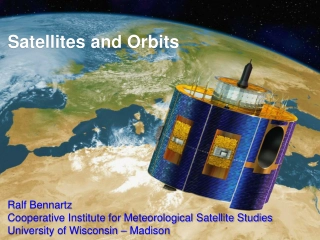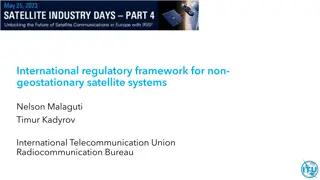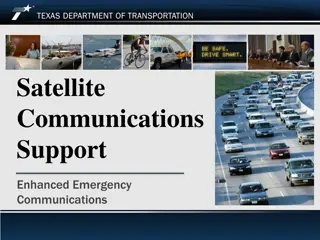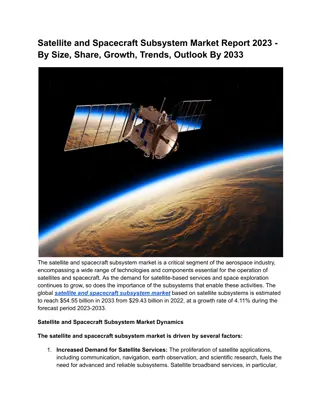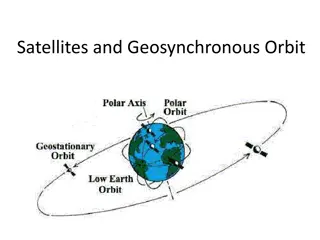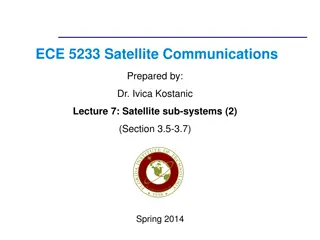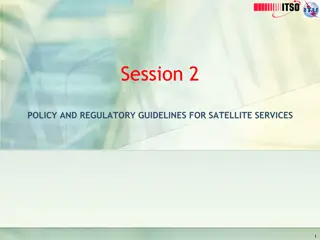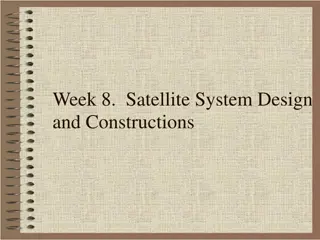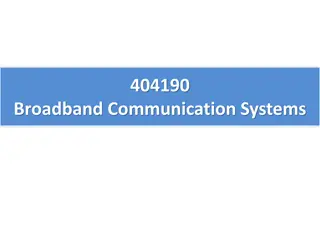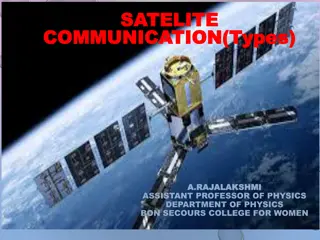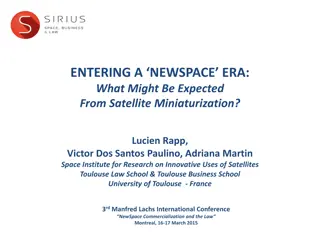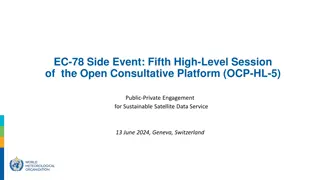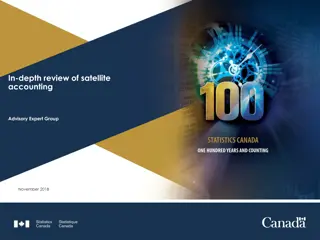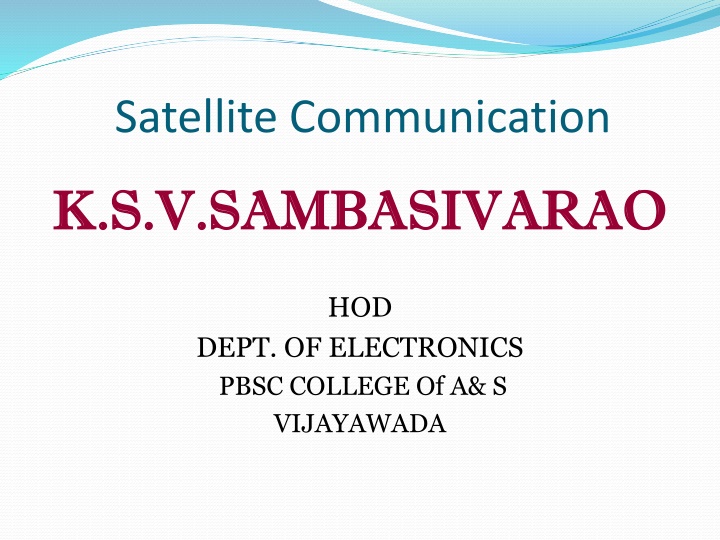
Satellite Communication Overview and Components
Explore the world of satellite communication, from its historical milestones to classification and functional requirements. Learn about satellites, their orbits, Kepler's laws, and basic components. Understand the significance of transmitting and receiving antennas in satellite communication systems.
Download Presentation

Please find below an Image/Link to download the presentation.
The content on the website is provided AS IS for your information and personal use only. It may not be sold, licensed, or shared on other websites without obtaining consent from the author. If you encounter any issues during the download, it is possible that the publisher has removed the file from their server.
You are allowed to download the files provided on this website for personal or commercial use, subject to the condition that they are used lawfully. All files are the property of their respective owners.
The content on the website is provided AS IS for your information and personal use only. It may not be sold, licensed, or shared on other websites without obtaining consent from the author.
E N D
Presentation Transcript
Satellite Communication K.S.V.SAMBASIVARAO K.S.V.SAMBASIVARAO HOD DEPT. OF ELECTRONICS PBSC COLLEGE Of A& S VIJAYAWADA
Introduction A satellite is a solid object which revolves around some heavenly body due to effect of gravitational forces which are mutual in nature. In the year 1962, the American telecommunication giant AT&T launched the world communication satellite called Telstar. In the year 1975,the Indian satellite was launched known as Arya Bhatta. It was assembled by an organization called ISRO
classification Active :It structure has a processing equipment called transponder. It serve dual purpose i.e provides amplification of incoming signal and perform frequency translation of incoming signal to avoid interference between two signals. Passive: It is divided in to two types natural & artificial A moon is natural satellite on earth. A spherical baloon with metal coated plastic serve as artificial satellite.
Kepler: A German astronomer and mathematician of the late 16 & 17 century He use to determine three laws that describe the motion of fine planets Laws of planetary motion: Law of orbit-the orbit of planet about the sun is an ellipsewith the sun centerof massatone focus Law of areas-sun sweeps at equal areas in equal interval of time Laws of time period- the period for a planet to orbit the sun increase rapidly with radio us of orbit. Thus , we find that mercury the inner most planet, takes 88 days to orbit the sun but the outermost planet Pluto requires 248 years to do the same.
Basic components Every communication satellite in its simplest form(whether low earth (or) Geosynchronous). The transmitting information from an originating ground station to the satellite uplink and followed by retransmission of information from the satellite back to ground downlink. The exact nature of these components depending on orbit and system architecture.
Functional requirements of transmitting and receiving antenna have markedly different but directional characteristics applied to both antennas A single antenna may be frequently used for transmitting an receiving signal simultaneously. A satellite dish is a dish-shaped type of parabolic antenna designed to receive or transmit information by radio waves to or from a communication satellite. The term most commonly means a dish used by consumers to receive direct-broadcast satellite television from a direct broadcast satellite in geostationary orbit. The theoretical gain (directive gain) of a dish increases as the frequency increases.
Monitoring station Insert
Frequency bands: It is developing fast & application for satellite technique are increasing all the time. The higher frequency typically give access toward wider bandwidth but more susceptible to signal degradation due to rain fade L-band(1-2ghz) GPS carriers and also satellite mobile phones such as iridium, immarsat providing communication at sea ,land & air. S-band(2-4ghz)-whether radar , surface ship radar and especially for NASA communication.
C-band(4-8ghz)-It is for full time satellite network In the year 1962 the first live translantic TV signal for operating in this band. X-band (8-12ghz)-It is used in military, radar, whether monitoring, defence tracking, vehicle speed detection for low enforcement. Ku-band(12-18ghz)-it used for satellite communication. In Europe ku-band downlink from 10.7ghz to 12.75ghz for broad cast satellite service. Ka-band(26-40ghz)-up-link in either 27.5ghz and 31 GHz bands, high resolution
Features: It must be capable of operating in extreme conditions which still maintaining the highest standards of reliability because they can not be retrieved for maintenance (or) repair. Satellite design require circuit, transmitter and receiver. Satellite position: It must be kept in correct position& although they must be placed in exactly the correct orbit after they launched. The variations in earth gravitational field and other factors may cause them to drift out their correct position.
Satellite Power Electrical power is also required by the satellite for its electronic circuit and other electrical system. The power is supplied by large arrays of photo (or) solar cells. Batteries are also needed for the periods when the satellite is in darkness. Satellite Antenna: In which communication can take place with ground for geo stationary satellites directional, parabolic reflector, dish, horn antennas are used. These are used because power consumption on satellite has to be minimize whenever possible.
Satellite Environment: The surface exposed to the sun are heated by solar radiation& it will rise to high temperature where as other side that is not heated will be exceeding cold. Only conduction will give any heating effect under circumstances the temperature of whole satellite will also fall when it is in darkness. Satellite Ground station: It also need an effective antenna system. In communication satellite the antenna remains fixed expect they need to change to another satellite.
Orbits: It is of two types (i)NGSO (ii)GSO NGSO: It reduce problem of echo in voice communication, less power required, less delay in transmission path. GSO: there is only one geostationary orbit possible around the earth, simple ground station, very small frequency shift. Distance Covered: 35,786km above the earth.(GSO) 8000-20,000km above the earth.(MEO) 500-2,000km above the earth.(LEO)
NGSO GSO

